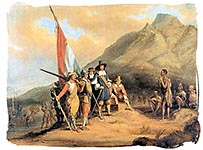Seafarers Discoverers and Villains
António de ABREU
António de Abreu (c. 1480 – c. 1514) was a 16th-century Portuguese navigator and naval officer. He participated under the command of Afonso de Albuquerque in the conquest of Ormus in 1507 and Malacca in 1511, where he got injured. Departing from Malacca in November 1511 with four ships, in an exploratory voyage to the 'Spice Islands' of Maluku, he led the first European expedition to reach Timor and the Banda Islands, in Indonesia, in 1512 Afonso de Albuquerque, 1st Duke of Goa c. 1453 – 16 December 1515) was a Portuguese general, admiral, and statesman. He served as viceroy of Portuguese India from 1509 to 1515, during which he expanded Portuguese influence across the Indian Ocean and built a reputation as a fierce and skilled military commander. Het Visboeck van Adriaen Coenen (1514-1587) is een handschrift uit 1579 over zeewezens. Over vissen, maar ook over dieren en volkeren die een nauwe band met de zee hebben (bijvoorbeeld de Inuit uit Groenland). Coenen geeft een beschrijving van de dieren en mensen, met zoveel mogelijk kenmerken. Hij voorziet deze informatie van kleurrijke illustraties, die bovendien erg nauwkeurig zijn. Roald Amundsen, (born July 16, 1872, Borge, near Oslo, Norway—died June 18, 1928?, Arctic Ocean), Norwegian explorer who was the first to reach the South Pole, the first to make a ship voyage through the Northwest Passage, and one of the first to cross the Arctic by air. He was one of the greatest figures in the field of polar exploration. In 1324, while staying in Cairo during his hajj, Mansa Musa, the ruler of the Mali Empire, told an Egyptian official whom he had befriended that he had come to rule when his predecessor led a fleet in an attempt to cross the Atlantic Ocean and never returned. This account, recorded by the Arab historian al-Umari, has attracted considerable interest and speculation as a possible instance of pre-Columbian trans-oceanic contact. The voyage is popularly attributed to a Mansa Abu Bakr II, but no such mansa ever reigned. Rather, the voyage is inferred to have been undertaken by Mansa Muhammad ibn Qu. Abu Abdullah Muhammad ibn Battutah, commonly known as Ibn Battuta, was a Berber Maghrebi scholar and explorer who travelled extensively in the lands of Afro-Eurasia, largely in the Muslim world. Willem Barentsz, anglicized as William Barents or Barentz, was a Dutch navigator, cartographer, and Arctic explorer. Barentsz went on three expeditions to the far north in search for a Northeast passage. Rodrigo de Bastidas was a Spanish conquistador and explorer who mapped the northern coast of South America, discovered Panama, and founded the city of Santa Marta. Vice-Admiral William Bligh FRS (9 September 1754 – 7 December 1817) was an officer of the Royal Navy and a colonial administrator. The mutiny on the HMS Bounty occurred in 1789 when the ship was under his command; after being set adrift in Bounty's launch by the mutineers, Bligh and his loyal men all reached Timor alive, after a journey of 3,618 nautical miles (6,700 km; 4,160 mi). Bligh's logbooks documenting the mutiny were inscribed on the UNESCO Australian Memory of the World register on 26 February 2021. Adriaen (Arjan) Block (c. 1567 – buried April 27, 1627) was a Dutch private trader, privateer, and ship's captain who is best known for exploring the coastal and river valley areas between present-day New Jersey and Massachusetts during four voyages from 1611 to 1614, following the 1609 expedition by Henry Hudson. He is noted for possibly having named Block Island, Rhode Island, and establishing early trade with the Native Americans, and for the 1614 map of his last voyage on which many features of the mid-Atlantic region appear for the first time, and on which the term New Netherland is first applied to the region. He is credited with being the first European to enter Long Island Sound and the Connecticut River, and to determine that Manhattan and Long Island are islands. Theodor de Bry (also Theodorus de Bry) was an engraver, goldsmith, editor and publisher, famous for his depictions of early European expeditions to the Americas. The Spanish Inquisition forced de Bry, a Protestant, to flee his native, Spanish-controlled Southern Netherlands. He moved around Europe, starting from his birth on the city of Liège in the Prince-Bishopric of Liège, then to Strasbourg, Antwerp, London and Frankfurt, where he settled.
Wikipedia
Afonso de ALBUQUERQUE
Wikipedia
Adriaen COENEN
Roald AMUNDSEN (
www.britannica.com
Abu BAKR II (ca.14th century)
A precise date for the suggested voyage is not known, though it is interpreted as having occurred in or shortly before 1312, the year Musa is inferred to have become mansa. No clear evidence of the fate of the voyage has been found.
Wikipedia
Ibn BATUTTA (24 February 1304 – 1368/1369)
Wikipedia
Willem BARENTZ (c. 1550 – 20 June 1597)
Wikipedia
Rodrigo de BASTIDAS (ca.1465-28 July 1527)
Wikipedia
William BLIGH
Seventeen years after the Bounty mutiny, on 13 August 1806, he was appointed Governor of New South Wales in Australia, with orders to clean up the corrupt rum trade of the New South Wales Corps. His actions directed against the trade resulted in the so-called Rum Rebellion, during which Bligh was placed under arrest on 26 January 1808 by the New South Wales Corps and deposed from his command, an act which the British Foreign Office later declared to be illegal. He died in London on 7 December 1817.
Adriaen BLOCK
Wikipedia
Theodor de BRY (1528 – 27 March 1598)
image shows engraving of Columbus, the discoverer of the New World, (1594)
De Bry created a large number of engraved illustrations for his books. Most of his books were based on first-hand observations by explorers, even if De Bry himself, acting as a recorder of information, never visited the Americas.
Brendan the Navigator (Brandaan van CLONFERT)
Brendan is supposed to have seen Saint Brendan's Island, a blessed island covered with vegetation. He also encountered a sea monster, an adventure he shared with his contemporary Columcille. The most commonly illustrated adventure is his landing on an island which turned out to be a giant sea monster named "Jasconius".
John CABOT
Sebastian CABOT
Pedro Álvares CABRAL
Diogo CÃO
Jacques CARTIER
Hendrick CHRISTIAANSEN
LEWIS and CLARK Expedition
Christopher COLUMBUS
James COOK
Hernan CORTÉS
John DAVIS
Bartolomeu DIAS
Juan Díaz de SOLÍS
Sir Francis DRAKE
Juan Sebastián ELCANO
Leif ERIKSSON
Johan EVERTSEN de Oude
Jan van GALEN
Vasco da GAMA
Aleixo GARCIA
Binot Paulmier de GONNEVILLE
052 -Laurens de GRAAF
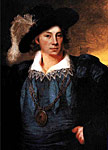 "Laurens Cornelis Boudewijn de Graaf (c. 1653, Dordrecht, Dutch Republic - 24 May 1704, Cap-Français, Saint-Domingue) was a Dutch pirate, mercenary, and naval officer in the service of the French colony of Saint-Domingue during the late 17th and early 18th century." Wikipedia
"Laurens Cornelis Boudewijn de Graaf (c. 1653, Dordrecht, Dutch Republic - 24 May 1704, Cap-Français, Saint-Domingue) was a Dutch pirate, mercenary, and naval officer in the service of the French colony of Saint-Domingue during the late 17th and early 18th century." Wikipedia©: (the portrait of Laurens de Graaf of disputed authenticity) PD
tags: #Laurens de Graaf #Graff Lorens
Hugo de GROOT
HOMER
HANNO
Jacob van HEEMSKERCK
HIMILCO
Alexander von HUMBOLDT
Bjarni HERJOLFSSON
Pieter Pietersen HEIJN
Henry HUDSON
ref. # 051 -Jan Huygen van LINSCHOTEN
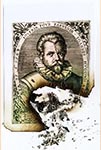 "The significance of this first Dutch survey of the former Netherlands East Indies lies in the valuable sailing instructions which Van Linschoten had managed to acquire, information that could only be found in the secret archives of the Portuguese administration. Abusing the trust put in him he had copied it page by page. Thus, in one go, the greatly coveted shipping route to the Netherlands East Indies and the route between the Asiatic sea ports as such, came within reach. Even more crucially, Van Linschoten had also obtained information on very delicate nautical data that provided insight into the currents, deeps, islands and sandbanks, and such knowledge was absolutely vital for safe navigation. Besides, everything was elucidated by coastal depictions and maps of unprecedented accuracy for those days."
"The significance of this first Dutch survey of the former Netherlands East Indies lies in the valuable sailing instructions which Van Linschoten had managed to acquire, information that could only be found in the secret archives of the Portuguese administration. Abusing the trust put in him he had copied it page by page. Thus, in one go, the greatly coveted shipping route to the Netherlands East Indies and the route between the Asiatic sea ports as such, came within reach. Even more crucially, Van Linschoten had also obtained information on very delicate nautical data that provided insight into the currents, deeps, islands and sandbanks, and such knowledge was absolutely vital for safe navigation. Besides, everything was elucidated by coastal depictions and maps of unprecedented accuracy for those days."National Library of the Netherlands (this page no longer available)
There's a quiet well known children song about Jan Huygen, which is even sung today ...
©:
tags: #Jan Huygen van Linschoten
See also #204
051b Jan Huygen van Linschoten -fusta
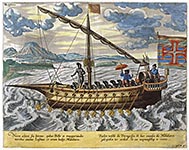 Drawing of a 'fusta' which is a narrow, light and fast ship with shallow draft, powered by both oars and sail in essence a small galley, by Jan Huygen van Linschoten
©: PD wikipedia
Drawing of a 'fusta' which is a narrow, light and fast ship with shallow draft, powered by both oars and sail in essence a small galley, by Jan Huygen van Linschoten
©: PD wikipediatags: #fusta #Jan Huygen van Linschoten
Ferdinand MAGELLAN
Douglas MAWSON, Edgeworth David, and Alistair Mackay
Jan Cornelisz. MAY
Thomas MORE
Ivan Yuryevich MOSKVITIN
Henry the NAVIGATOR
Lord Horatio Admiral NELSON
Olivier van NOORT
Adolf Erik NORDENSIÖLD
Jacob van Wassenaer OBDAM
Francesco de ORELLANA
Robert PEARY
Serpa PINTO
Francesco PIZARRO
Fernão do PO
ref. # 051a -Dirck Gerritz. POMP
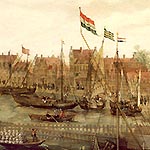 "Dirck Gerritszoon Pomp, alias Dirck China (1544-c1608) was Dutch sailor of the 16th-17th century and the first known Dutchman to visit China and Japan."
"Dirck Gerritszoon Pomp, alias Dirck China (1544-c1608) was Dutch sailor of the 16th-17th century and the first known Dutchman to visit China and Japan."Wikipedia
picture: Abraham de Verwer, approx. 1615, ´Ships on the river Amstel´
"Two ships, in particular, stand out in this painting. The first is the yacht moored to the palings, which is flying a flag with the arms of Amsterdam and might be a pleasure yacht, a ferry or an official city yacht. The yacht on the left is unusual in that it does not have the gaff or spritsail rig common at this period, but a jibheaded rig with loose-footed, triangular sails. This probably originated in Portugal, and was introduced into Holland at the end of the sixteenth century by Dutchmen in Portuguese service, like Jan Huygen van Linschoten and Dirck Gerritsz. Pomp. This is the earliest known painting of a vessel with this rig." ©: picture www.robkattenburg.nl
tags: #Linschoten #Pomp #Abraham de Verwer
- CLICK THE IMAGE FOR A MUCH LARGER VIEW -
Sir Walter RALEIGH
ref. # 186b- portrait Jan van RIEBEECK
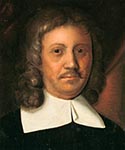 ©: www.janvanriebeeckhuis.nl/?p=304
©: www.janvanriebeeckhuis.nl/?p=304tags: #Jan van Riebeeck
more about the landing of Jan van Riebeeck at #033
ref. # 186 - Riebeeck -banknotes
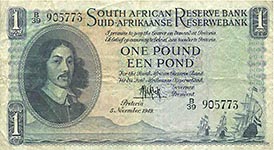 The engraving on banknote is made after this portrait by Dirck Craey, 1650. Oil on panel, size 74x57". It is in Amsterdams Rijksmuseum ... and is labeled as "A Portrait of a Man, presumably Bartholomeus Vermuyden".
The engraving on banknote is made after this portrait by Dirck Craey, 1650. Oil on panel, size 74x57". It is in Amsterdams Rijksmuseum ... and is labeled as "A Portrait of a Man, presumably Bartholomeus Vermuyden".©: www.notescollector.eu/pages/en/notes.php?noteId=858
tags: #Jan van Riebeeck #South africa
186a 2014 travel journal - portrait Bartholomeus VERMUYDEN
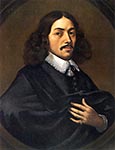 Portrait of a Man, thought to be Bartholomeus Vermuyden (1616/17-1650), Dirck Craey, 1650
Portrait of a Man, thought to be Bartholomeus Vermuyden (1616/17-1650), Dirck Craey, 1650©: Rijksmuseum (public domain)
http://hdl.handle.net/10934/RM0001.COLLECT.8184
tags: #Bartholomeus Vermuyden #Rijksmuseum #South Africa
James Clark ROSS
Michiel Adriaanszoon de RUYTER
Robert Falcon SCOTT
Francesco SERRÃO
Timothy SEVERIN
Jan van SPEIJK
Federico SPINOLA
Abel TASMAN
Raposo TAVARES
Maarten Harpertszoon TROMP (23 April 1598 – 31 July 1653)
n the First Anglo-Dutch War of 1652 to 1653, Tromp commanded the Dutch fleet in the battles of Dover, Dungeness, Portland, the Gabbard and Scheveningen. In the latter, he was killed by a sharpshooter in the rigging of William Penn's ship. His acting flag captain, Egbert Bartholomeusz Kortenaer, on the Brederode kept up fleet morale by not lowering Tromp's standard, pretending Tromp was still alive.
Gunnbjörn ULFSSON
Andrés de URDANETA
Alvár Núñes Cabeza de VACA
Giovanni da VERRAZZANO
Amerigo VESPUCCI
Leonardo da VINCI
Witte Corneliszoon de WITH
ZENGH





